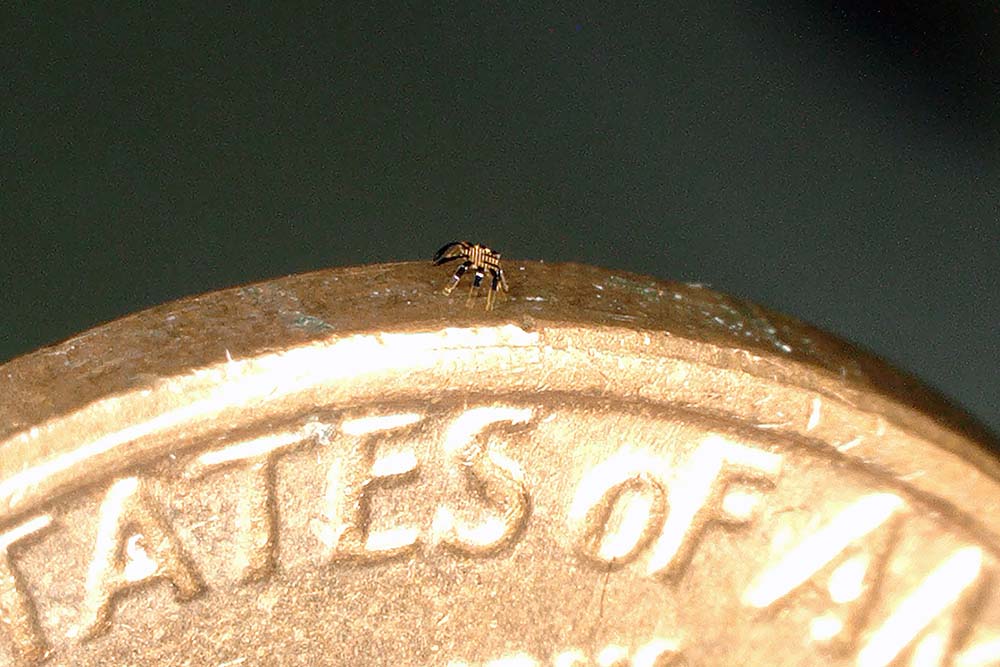|
Listen to this article  |

The tiny robot created by a team of engineers at Northwestern University is only about half a millimeter wide. | Source: Northwestern University
Engineers at Northwestern University have created a remote-controlled walking robot half a millimeter wide. The tiny robot, modeled after a peekytoe crab, is able to bend, twist, crawl, walk, turn and jump.
The research team constructed the robot with a shape-memory alloy material that can transform to a “remembered” shape when heated. The team used a scanned laser beam to to quickly heat the robot at targeted locations, making those locations transform.
As the robot cools, a thin coating of glass brings the transformed part of the robot back into shape. These transformations, as parts of the robot heat and cool, create locomotion. Changing the direction of the laser scanning changes the robot’s walking direction.
“Our technology enables a variety of controlled motion modalities and can walk with an average speed of half its body length per second,” Yonggang Huang, leader the theoretical work on the project, said. “This is very challenging to achieve at such small scales for terrestrial robots.”
Huang is a professor of Mechanical Engineering and Civil and Environmental Engineering at Northwestern’s school of engineering, and key member of the university’s Querrey Simpson Institute for Bioelectronics (QSIB).
“Because these structures are so tiny, the rate of cooling is very fast,” John A. Rogers, leader of the experimental work on the project, director of QSIB, and professor at Northwestern’s school of engineering, said. “In fact, reducing the sizes of these robots allows them to run faster.”
Huang and Rogers used a pop-up assembly method, inspired by pop-up books, that they previously developed together to create the robot. The team made precursors to the crab structure in flat, planar geometries, and then bonded the precursors to a slightly stretched rubber substrate.
When the stretched substrate relaxes, it creates a controlled buckling that causes the crab to pop into its three-dimensional form. This manufacturing method means the team could create robots of various different shapes and sizes.
The team hopes that its research, while exploratory, could someday bring the field closer to creating micro-sized robots that can perform tasks in tightly confined spaces.
“Robotics is an exciting field of research, and the development of microscale robots is a fun topic for academic exploration,” Rogers said. “You might imagine micro-robots as agents to repair or assemble small structures or machines in industry or as surgical assistants to clear clogged arteries, to stop internal bleeding or to eliminate cancerous tumors — all in minimally invasive procedures.”
The team’s research was published in Science Robotics.
Credit: Source link


Comments are closed.